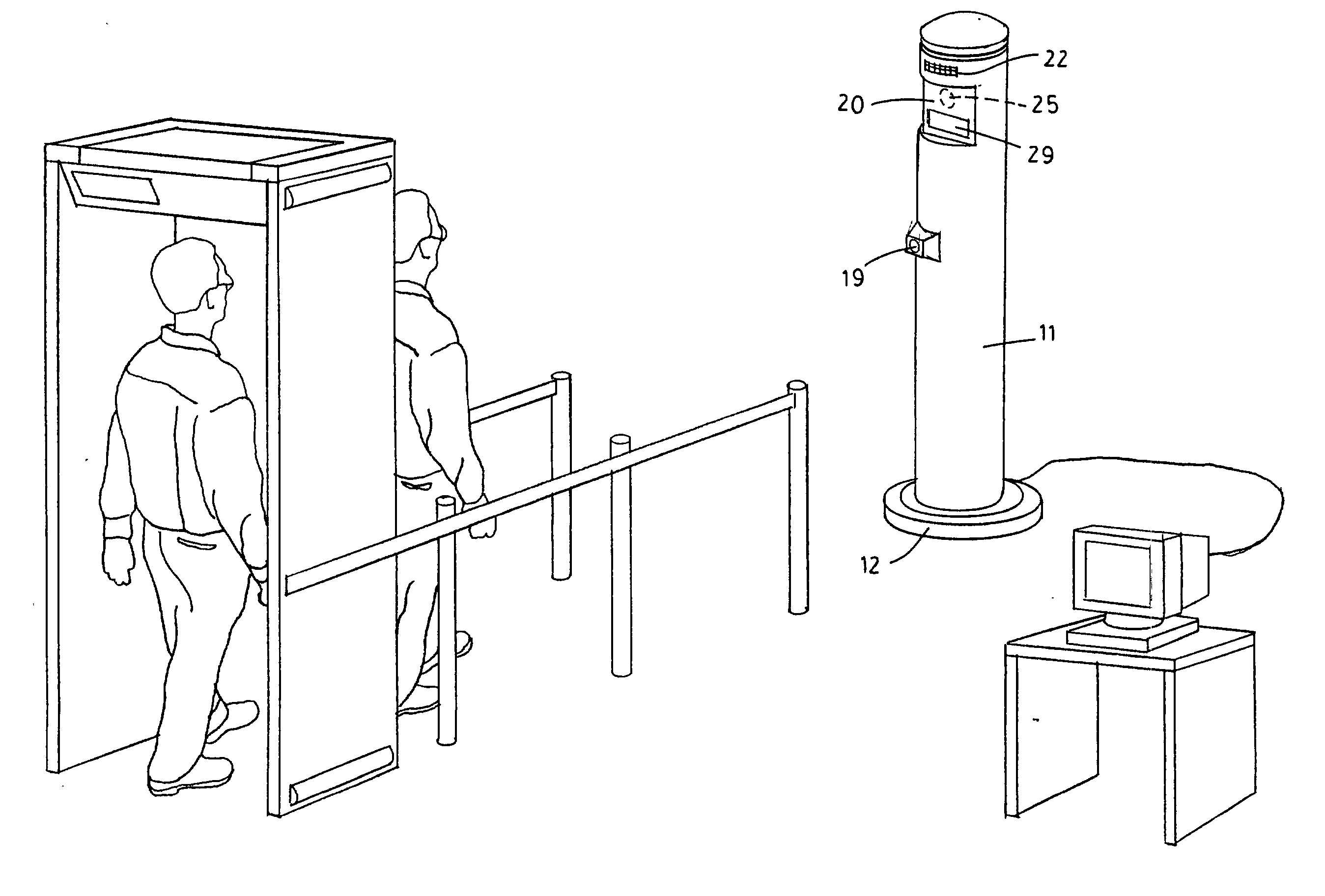Security identification system
a security identification and system technology, applied in the field of checkpoint security, can solve the problems of inability to accurately recognize faces, and difficulty in the system to accurately identify faces,
- Summary
- Abstract
- Description
- Claims
- Application Information
AI Technical Summary
Benefits of technology
Problems solved by technology
Method used
Image
Examples
Embodiment Construction
[0054] Referring to the drawings wherein like reference characters designate like or corresponding parts throughout the several views, and referring particularly to FIGS. 1, 2, and 3, it is seen that the invention includes a large diameter vertical post 11 having a support base 12. A window 20 is provided on the front of post 11 behind which a video camera 25 is deployed, preferably a high-resolution, low-light capable digital camera. Camera 25 should be selected such that is it capable of reading the facial features of individuals from as far away as 25 feet, to as close as 1 foot.
[0055] Window 20 also includes at least two illuminatable signs 29 which display the different messages such as "stop" and "go," as well as any other additional or alternative messages such as "look up," "step forward," "step back," "proceed," etc. It is to be appreciated that instead of displaying words in window 20, visual symbols may be used to provide instructions (e.g., the universal "do not enter" s...
PUM
 Login to View More
Login to View More Abstract
Description
Claims
Application Information
 Login to View More
Login to View More - R&D
- Intellectual Property
- Life Sciences
- Materials
- Tech Scout
- Unparalleled Data Quality
- Higher Quality Content
- 60% Fewer Hallucinations
Browse by: Latest US Patents, China's latest patents, Technical Efficacy Thesaurus, Application Domain, Technology Topic, Popular Technical Reports.
© 2025 PatSnap. All rights reserved.Legal|Privacy policy|Modern Slavery Act Transparency Statement|Sitemap|About US| Contact US: help@patsnap.com



